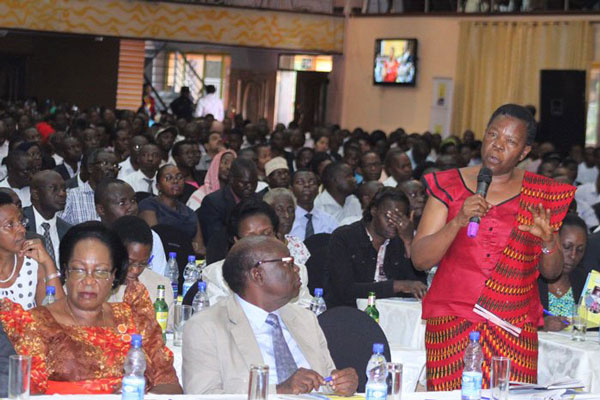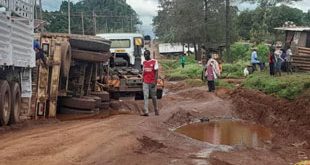
Victoria Sekitoleko, a former minister of agriculture (1986-1995) also sounded frustrated by the double-faced budget.
“It seems there is a difference between the preacher (Museveni) and the budget guy (Kasaija) because when you read the narrative budget they are talking about agriculture and tourism…but when you look at the figures you wonder whether it is you who does not understand the language or it is them who are playing with your brain,” she said in an interview with The Independent at the event.
But Kasaija appeared unfazed by the all-round criticism. “It is a friendly budget which we carefully planned for six months,” he said and again described himself as “a strategic thinker”.
Kasaija added that the chances of having his good budget executed and leading the country to middle income status would depend on the peace and security that has been guaranteed across the country, availability of reliable electricity and improved road and other infrastructure developments. He said the economy “is set to grow by leaps and bounds”.
Sekitoleko was unimpressed: “It is a good budget because it is his budget,” she told The Independent, “Beauty lies in the hands of the beholder; what did you expect him to say.”
In terms of real sector allocations, four out of 18 sectors of the budget are consuming 55% of the budget with Works and Transport taking the largest share of Shs 4.5 trillion (20.8%) up from 3.8 trillion a year before followed by Interest Payment Due which snatched Shs2.6 trillion (12.2%) up from Shs2 trillion in FY 2016/17, then Education taking Shs 2.5 trillion up from 2.4 trillion a year before and Energy and Mineral development getting Shs2.3 trillion almost the same amount allocated to it in this ending financial year. The other sectors including Health, Security and Agriculture and others took the small balance with each of them getting below 10% of the entire budget (details in illustrations).
Kasaija said this allocation is connected to the budget strategy that would see government turning around the economy by enhancing agricultural production and productivity, as well as increasing the pace of industrialisation.
He said the vagaries of climate change like drought that hit the country in most parts of last year would be tackled by, among others, fast-tracking irrigation and improving the implementation of programmes like operation wealth creation. As regards industrialisation, Kasaija said, government will vigorously promote agro-processing and mineral beneficiation.
“Through this double-pronged approach we shall be addressing the unemployment problem,” he said.
But Ssekitoleko and Ggoobi expressed concerns about the small actual amounts allocated to some components of sectors deemed to be very important to meeting Kasaija’s budget strategy and the country’s US$1, 039 per capita income for a middle income status by 2020.
For instance, agriculture which employs over 70% of the population came in the 10th position with 3.8% of the budget with the sector’s allocation amounting to Shs828 billion, just slightly higher than the Shs823 billion that was allocated to it in FY2016/2017. Kasaija said they are linking agriculture to industry so as to create jobs and boost economic prosperity. Of the total sector allocation, Shs23 billion was allocated for recruitment of agricultural extension workers, bringing extension staffing levels to 78%.
He also allocated Shs39.6 billion next year to increase the effectiveness of agricultural extension in improved delivery of the Operation Wealth Creation programme (OWC) and more small programmes.
“They were right on the choice in terms of words; when you read the budget everything is perfect, the challenge is they are not walking the talk and balancing the budget,” Ggoobi said.
He said government, as the lead implementer for these progammes, lacks capacity to effectively execute them.
He said that he was uncomfortable with a small Shs98 billion allocated to trade and tourism industry which the government says it plans to build the economy on in comparison with a sector like public sector management that got Shs1.4 trillion.
On infrastructure, Ggoobi said government is still obsessed with infrastructure “as if infrastructure is going to recover the economy today and Uganda is ending tomorrow”.
“Infrastructure is good but we need to be mindful of the key economy drivers of short-term growth and we put money in them,” he says.
On whether the budget strategy fits well in middle income status agenda, Ggoobi said, a budget that would reflect middle income would have targeted systematically activities where people, especially the poor and farmers are earning their livelihood.
Similarly, Ssekitoleko said Kasaija forgot to mention short-term measures in the new budget that would tackle calamities like the fall army warm, current famine and bird flu which are affecting livelihood of majority of the population.
In Sekitoleko’s view, two sectors are critical for Uganda’s dream of attaining middle income status.
“In my view, invest whatever you have in agriculture but whatever investment you make, make sure it is linked to manufacturing so that we do value addition and then we can export and fund everything else,” she said.
The other highlight in Kasaija’s strategy is the rising debt that hit US$8.7bn (Shs 30.8 trillion) as at end of December 2016, which is equivalent to 33.8% of GDP. Kasaija said this rate is still sustainable because it is still below the international recommended rate of 50% [to GDP] by agencies like IMF and World Bank.
However, other experts like Fred Muhumuza, a development economist and former advisor to the ministry of finance differ.
“It is now official that the middle income status that we have been debating about will not happen,” Muhumuza said at a KPMG post-budget meeting on June 8, moments after the budget was presented to the public. He added that the minister had put it clear in his budget speech that if the middle income was to happen, the country would have to add about US$17bn (Shs 60.2 trillion) over the next two years, yet the economy is currently struggling.
On public debt, Muhumuza again differed from Kasaija.
“You know lenders don’t want to see you in a position where you are most likely going to be unable to pay their loans,” he said, “So majority of them would start to slow down lending as early as possible.”
Going forward, Muhumuza downplayed Kasaija’s budget strategy on jobs saying, globally, manufacturing and industrialisation no longer create jobs because sectors largely rely on technology and less employment for labour. “So we need to be more innovative,” he said.
With inflation remaining in single digits (below 10% year-on-year), the exchange rate stable, though still high at about Shs3, 600 per US dollar since 2017 began and banks interest rates declining to around 22% in 2017 from around 25% a period before, it is clear, a more balanced and more of short-term growth budget expenditure would necessitate growth that would feed into Uganda’s development agenda – other factors constant.
 The Independent Uganda: You get the Truth we Pay the Price
The Independent Uganda: You get the Truth we Pay the Price



You ould certainly see your expertise within the article you write.
The worldd hopes for even more passonate writers like yoou who aren’t afraid too say how they believe.
Always go after your heart.
Incredible points. Outstanding arguments. Keep up the greatt effort.
Wow! In the end I gott a web site from where I be capable of truly take helpful data
regarding my study and knowledge.
I like looking through an article that will make men and
women think. Also, thank you for allowing me too comment!
I’m really enjoging thhe theme/design of your site. Do you ever
run into any internet browser compatibility issues? A few of my blog audience have complained about my website
not working correctly in Explorer but loooks great in Chrome.
Do you have any adviice to help fix this issue?